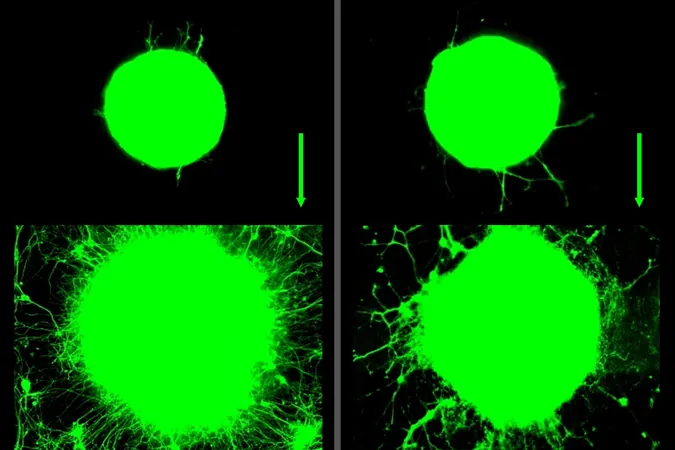
Unlocking Healing: How Exercise Fuels Nerve Growth Could Change Recovery Forever
2024-11-12
Author: Mei
Introduction
There's no denying that exercise has a slew of benefits for our bodies. It strengthens not only muscles but also bones, blood vessels, and even bolsters the immune system. However, groundbreaking research from MIT engineers suggests that the advantages of exercise extend beyond just physical strength—there's potential at the microscopic level that could revolutionize nerve repair.
Biochemical Signals and Neuron Growth
The team's findings indicate that when our muscles contract during workouts, they release a cascade of biochemical signals known as myokines. In laboratory tests, neurons exposed to these myokines grew an astonishing four times further compared to those that weren’t, revealing a profound biochemical link between muscle activity and nerve growth. This groundbreaking discovery offers fresh hope for developing therapies targeting nerve injuries, potentially transforming how we approach rehabilitation.
Physical Forces and Neuronal Growth
Beyond biochemical signals, the researchers also found that the physical forces generated during exercise play a critical role in neuronal growth. By simulating muscle contractions—essentially 'exercising' the neurons—they noted that this mechanical stimulation caused neurons to grow significantly, mirroring the effects seen with myokines. This dual mechanism underscores the idea that both biochemical and physical aspects of exercise are essential for optimal nerve health.
Implications of the Research
Ritu Raman, the lead researcher and an assistant professor of Mechanical Engineering at MIT, emphasized the implications of this research. "Understanding that there's this connectivity between muscles and nerves opens up new avenues for treatment, especially for individuals suffering from nerve injuries where traditional nerve communication is severed. By stimulating muscle activity, we could encourage nerve healing and help restore mobility to those affected by traumatic injuries or degenerative diseases like ALS."
Related Studies and Recovery in Mice
In a related study conducted in 2023, Raman and her team successfully restored mobility in mice with traumatic muscle injuries. They implanted new muscle tissue and stimulated it with light, an approach that led to remarkable recovery in motor functions. This earlier work laid a solid foundation for the current exploration of how exercise might serve as a treatment for nerve regeneration and recovery.
Innovative Methods of Investigation
The researchers utilized innovative methods to investigate this phenomenon, including creating engineered muscle cells that could be activated to mimic exercise. This lab-based work enabled them to collect myokines and measure their effects on mouse-derived motor neurons, which revealed immediate and robust neuronal growth. The gene expressions of these neurons indicated not just growth but also maturation—suggesting that exercise aids in the overall health and functionality of nerve cells.
Future Directions
Next, the MIT team plans to delve deeper into the practical applications of their findings, investigating how targeted muscle stimulation could become a therapeutic strategy for nerve injury rehabilitation. Imagine a future where rehabilitation doesn't just involve traditional physical therapy but utilizes the science of muscle and nerve communication as a form of "exercise medicine."
Conclusion
As research progresses, the implications of this work could herald not just significant advancements in recovery for individuals with nerve damage but also reshape how we view the integral role of exercise in maintaining overall health. Get ready to see exercise as more than just a fitness regimen—it's a potential key to healing and recovery that might redefine medical approaches to nerve injuries.


 Brasil (PT)
Brasil (PT)
 Canada (EN)
Canada (EN)
 Chile (ES)
Chile (ES)
 España (ES)
España (ES)
 France (FR)
France (FR)
 Hong Kong (EN)
Hong Kong (EN)
 Italia (IT)
Italia (IT)
 日本 (JA)
日本 (JA)
 Magyarország (HU)
Magyarország (HU)
 Norge (NO)
Norge (NO)
 Polska (PL)
Polska (PL)
 Schweiz (DE)
Schweiz (DE)
 Singapore (EN)
Singapore (EN)
 Sverige (SV)
Sverige (SV)
 Suomi (FI)
Suomi (FI)
 Türkiye (TR)
Türkiye (TR)